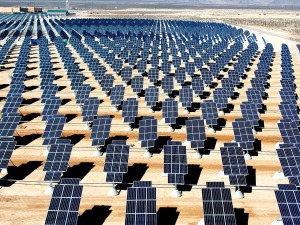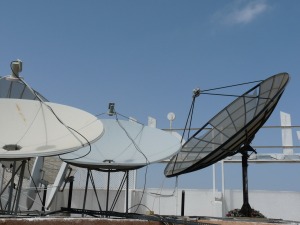The US economy has been changing very rapidly. It has been changing so fast that it’s hard to keep up with the changes. There have been several rapid changes this year alone. It’s not only the United States that has been going through some rapid changes, but the wind of change seems to be blowing all over the globe today. What changes do we expect to see around the world in the future? In this article we will attempt to analyze some of the economic indicators and figure out trends, based on expert opinions and research done by economists and organizations around the world.
However, analyzing future economic trends is not an easy task. Daniel Altman, who teaches economics at New York University’s Stern School of Business and is chief economist of Big Think, once said that “predicting trends is no easy task, especially in the short term. Most people who can do it accurately in the world of economics and finance are millionaires, or they should be.”
Having said that, for those of you who have been keeping up with the current world news should already know that the economy of the United States has been reported in mainly positive terms in recent months.
Here are the top 5 economic trends that you ought to watch for in the future.
1. Cheap solar technology
 Until now, solar power was thought to be an expensive and impractical way of generating power strong enough for industries. It was thought to be only kept alive through government subsidies. But today, that cliché about solar power has been proven wrong. According to Noah Smith, who is an assistant professor of finance at Stony Brook University, writes, “Old trends: Soaring US carbon dioxide emissions, skyrocketing medical costs, out-of-control deficits. New trends: Tumbling emissions, creeping medical costs, falling deficits.” – (The Atlantic)
Until now, solar power was thought to be an expensive and impractical way of generating power strong enough for industries. It was thought to be only kept alive through government subsidies. But today, that cliché about solar power has been proven wrong. According to Noah Smith, who is an assistant professor of finance at Stony Brook University, writes, “Old trends: Soaring US carbon dioxide emissions, skyrocketing medical costs, out-of-control deficits. New trends: Tumbling emissions, creeping medical costs, falling deficits.” – (The Atlantic)
Zero emission alternate sources of energy are going to be so powerful in the future that solar will become a source of energy for everything from homes to automobiles. Even airplanes will be powered by sources that do not burn any fuel. For example, an electric plane powered with batteries and solar cells on its wings set seven new world records last summer; this was just the tip of the iceberg in electric and solar technology.
2. Growth of mobile technology
 The trend towards mobile technology will continue to grow. Billions of people around the world access the internet today with hand-held devices, and by the year 2020 this number could be over 5 billion in the United States alone. There will be over 80 billion connected devices worldwide (forbes.com).
The trend towards mobile technology will continue to grow. Billions of people around the world access the internet today with hand-held devices, and by the year 2020 this number could be over 5 billion in the United States alone. There will be over 80 billion connected devices worldwide (forbes.com).
The growth of mobile technology is going to be so overwhelming in the future, that it will continue to have greater impact on our daily lives as mobile technology gets more powerful.
An article from Fortune.com titled: Mobile growth is about to be staggering says that “A report from Swedish telecom giant Ericsson this week showed that mobile traffic on data networks has been doubling for the past two years.” In a more comprehensive report, Cisco said earlier this month that “global traffic on data networks grew by 70% last year.” Another report from Cisco shows a comparison of how big the mobile industry has become today. According to the report, “the traffic on mobile data networks in 2012 was 885 petabytes — was nearly 12 times greater than total Internet traffic around the world in 2000, back when the web was taking off.” This trend will continue to grow at a rate of 66% each year, as predicted by Kevin Kelleher of Fortune. Cisco further estimates that mobile devices draw four times as much data from Wi-Fi networks as they do from cellular networks. (picocela.net)
 The most important impact that the mobile network will have, will be on social networks and B2C business, as more and more business will have an online presence and do business online.
The most important impact that the mobile network will have, will be on social networks and B2C business, as more and more business will have an online presence and do business online.
Sarwant Singh, contributor to Forbes.com said in one of his article titled: The 10 Social And Tech Trends That Could Shape The Next Decade, that our daily lives will become connected and the three areas of work, home and surrounding environment will combine into one “connected living” which will involve digital assistants that guide our everyday lives. All our data will sit in clouds that we can access at anytime, anywhere. A new range of technology-enabled services, such as smart lighting, mobile working solutions, and smart governance will define and shape our everyday experiences, he added.
3. Rapid spread of misinformation online
 While social media platforms are quick and effective ways to get connected, socialize, and market a product, they can also lead to viral misinformation propagation which can lead to undesirable effects. Spreading of false information over the internet is a genuine concern today. False information spreads and circulates just as quickly and easily as correct information does.
While social media platforms are quick and effective ways to get connected, socialize, and market a product, they can also lead to viral misinformation propagation which can lead to undesirable effects. Spreading of false information over the internet is a genuine concern today. False information spreads and circulates just as quickly and easily as correct information does.
Being first to report news has always been of importance in the media outlets. However, some news organizations are placing higher value on accuracy rather than being first to report. This is due to several high profile mistakes made using social media information in recent years.
For example, it is worth remembering the incident of the Boston Marathon Bombing in 2013, when New York Post printed pictures of two suspects on the front page based on the information they had found on Reddit. It ultimately turned out that they had nothing to do with the bombing. In another instance, following the disappearance of Malaysia Airlines flight MH370 in March 2014, NBC news had also highlighted several false reports spreading on social media which alleged that the plane had made a safe landing.
News on the internet and social media spreads at a faster pace, which news organizations find impossible to compete with, with their verification process for facts. Verifying information available online is becoming increasingly important. Trust in the source of information continues to be the most, important asset a news organization has. (The Guardian)
4. Widening income disparities
 Income inequality has grown at a significant rate in the United States since the 1970s. Growing inequality is one of the biggest social, economic and political challenges of our time. But it is not inevitable, says Zanny Minton Beddoes, specialist of United States Economics, and editor of The Economist’s Business affairs, based in London.
Income inequality has grown at a significant rate in the United States since the 1970s. Growing inequality is one of the biggest social, economic and political challenges of our time. But it is not inevitable, says Zanny Minton Beddoes, specialist of United States Economics, and editor of The Economist’s Business affairs, based in London.
In another report, authors Robert J. Gordon and Ian Dew-Becker provide a comprehensive survey of seven aspects of rising inequality:
- changes in labor’s share of income
- labor mobility
- skill-biased technical change
- inequality among high income groups
- consumption inequality; geographical inequality
- international differences in income distribution
- inequality at the bottom of income distribution
Ray B. Williams, author of Breaking Bad Habits and The Leadership Edge, said in an article that among all the developed nations around the world, the United States has the greatest gap in wealth, and the problems that it causes are becoming more apparent with every passing day. (How economic inequality is damaging our social structure)
Linette Lopez, Senior Finance Editor for Business Insider also published an article called This Is How Income Inequality Destroys Societies. She showed in her article how social inequalities give rise to frustration, crime, and declines social wellbeing and trust among people.
According to Nancy Krieger, a professor of society, human development and health at Harvard – the level of inequality we allow in a society represents what kind of society we want to live in.
5. China becoming an economic power
The focus on China is going to be huge in the global economy of the future. According to IMF, Asian economies will represent at least 40% of the global economic output by 2015.
 There is no doubt that China is set to become the world’s largest economy. The only debates are about what date and by what measure. All global economists agree that it is only a matter of time before a major economic, psychological, cultural and political shift will impact the economy of the United States. (globalchange.com)
There is no doubt that China is set to become the world’s largest economy. The only debates are about what date and by what measure. All global economists agree that it is only a matter of time before a major economic, psychological, cultural and political shift will impact the economy of the United States. (globalchange.com)
Recently, The Guardian published an article titled China’s economy to outgrow America’s by 2030 as world faces ‘tectonic shift’. The article begins by saying “A US intelligence portrait of the world in 2030 predicts that China will be the largest economic power, climate change will create instability by contributing to water and food shortages, and there will be a “tectonic shift” with the rise of a global middle class.”
So, these are some of the economic trends of the future that will control the global economy in the future, based on research and conclusions drawn by expert analysis. As the future unfolds, there may be several other factors that will come into play and determine the fate of our economy in the future.
For more information on economic trends of the future, please visit our blogs regularly. Thinking of starting your own business? Click here to download our free eBook and unleash the entrepreneurial power in you!
Source: Institute of Ecolonomics



